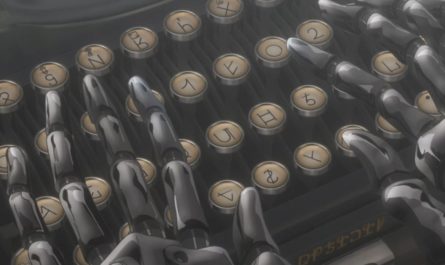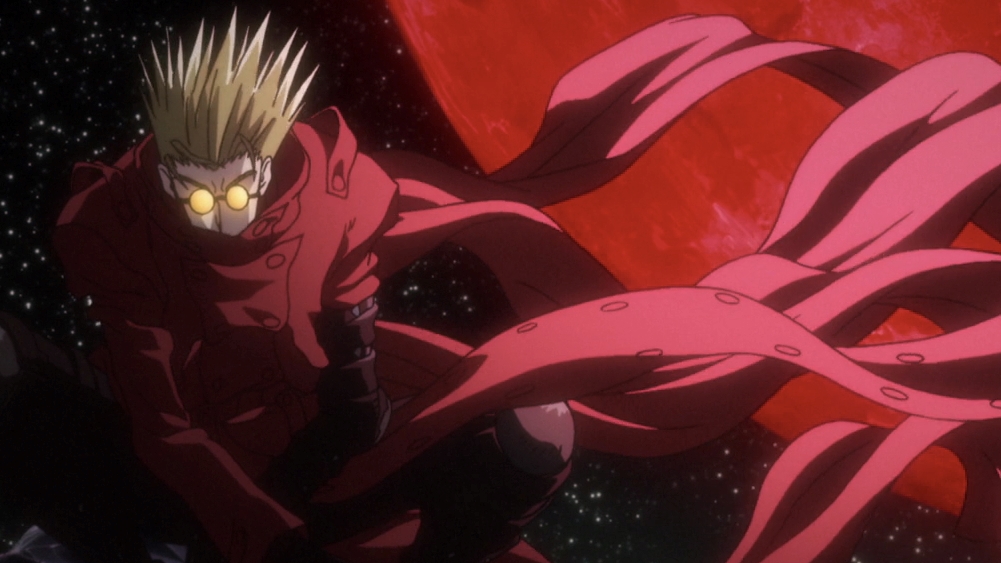Mobile Suit Gundam: Char’s Counterattack
by Dennis Fitzsimmons


If only the film delivered on its promise.
Does this mean CCA is a failure? Not exactly. The problem is, it’s a terrible adaptation. It attempts to summarize three novels worth of plot, characterization and action into a single two-hour film. In short, it’s a mess. Is it a complete failure, like Dune? Not exactly, and we’ll get into explaining why. After sitting out Gundam ZZ, and watching Haman Karn fall, Char is back. And with a similar goal, independence for the Spacenoids (citizens of Earth living in space). His plan? Dropping a giant asteroid on Earth. Because if it didn’t work the other three times, it’ll work this time! Why? Mankind has wreaked havoc on Earth, through pollution and the other deeds men (and women) do. The Earth Federation isn’t sure if they want to oppose Neo-Zeon, so they negotiate a peace treaty with them. Opposing Neo-Zeon is the Londo Bell, a division of the Earth Federation with series mainstays Bright Noa and Amuro Ray. 
With its distinctive intercutting during mech combat, it’s clear whose directorial voice is present.
Here’s why I can say CCA is not a complete washout. For starters, the core plot is fantastic. It’s a great concept and works as a fitting successor to the original series, which is what it sets out to be. Tomino’s direction remains solid, with his usual thumbprints all over the film. From the grey on grey morality to the triangle cuts during mech combat, and the mass carnage unraveling before your eyes, it’s clear no one else could have directed. So, if the concept works, the action is fun, and the film features a suitably epic feeling, why do I feel disappointed? Well, it’s what’s inside where everything falls apart.
Show of hands, who knew Lalah’s real plan was for a threesome?
The story is an incomprehensible mess. Important plot details are told rather than shown through action sequences, the compressed pacing means the story can’t breathe, and whatever details are plot-related are lost amidst mechs blowing up. I’ll give you an example. There’s a mech female pilot on the Federation side, who’s supposed to be a supporting character. I couldn’t tell you one thing about her, and her death in the film was played up as a tragedy, but all I kept thinking was, “Who is this character?” Not a good sign. The other newly introduced supporting characters (apart from Quess, Hathaway, and Gyunei) also suffer from this problem of underdevelopment. Considering one of Gundam’s hidden strengths was the depth of supporting characters, to have those type of characters underwritten is a massive problem. This underwritten quality is also prevalent in important plot-points. I didn’t realize that there was a first successful asteroid drop until I was reading a plot synopsis, and I guarantee you forgot it too! Speaking of badly written, the new characters. Or rather, the one who makes people hate the film immediately. Quess Paraya.
Understatement of the Universal Century
Let’s start with the obvious, most of the film revolves around her. This was billed as a matchup between two mortal enemies, and now someone with limited bearing on the actual plot comes into the picture. She’s bratty, annoying, and childish, and is about as qualified to pilot a mech as I am! This is an absolute shame because there is an interesting character in here, she’s just not it. There are wonderful stories about individuals getting sucked into a world completely different from their own, and finding they’re out of their element (Blue Velvet comes to mind). I still feel if the film was structured a lot better, it could have worked. The problem with Quess is the movie shows nothing inherently likeable or relatable in her character. She ignores the throes of love from two men her age, to hit above her weight class, and doesn’t realize it. She accidentally kills her father and doesn’t realize it. In the Beltorchika’s Children manga, it’s shown she has a complicated relationship with her father’s current wife, discovers Beltorchika’s pregnancy before everything else, confronts Char over the Lalah situation, and is generally a much more interesting character. Would have been nice to show that in the film.  When the film has quiet moments (which isn’t often), it does thrive. Especially during the sequence of Char consoling Quess, as she experiences what it’s like to be a Newtype in battle.
When the film has quiet moments (which isn’t often), it does thrive. Especially during the sequence of Char consoling Quess, as she experiences what it’s like to be a Newtype in battle.

Amusingly enough, this was a better adaptation of the story than CCA as a film. (I’ll get to reviewing the manga of this, trust me.)
For all its great action, animation, music, and it’s wonderful setup, the film lacks the narrative connective tissue to make its ideas work. As a result, you’re left with a beautiful looking mess. Char’s Counterattack comes sadly, not recommended.Pros:
- -Tomino’s direction of action continues to impress.
- -Animation is solid for the time.
- -The soundtrack is suitably epic.
Cons:
- -The Story. The Story. The Story.
- -The new characters introduced feel superfluous and underwritten.




